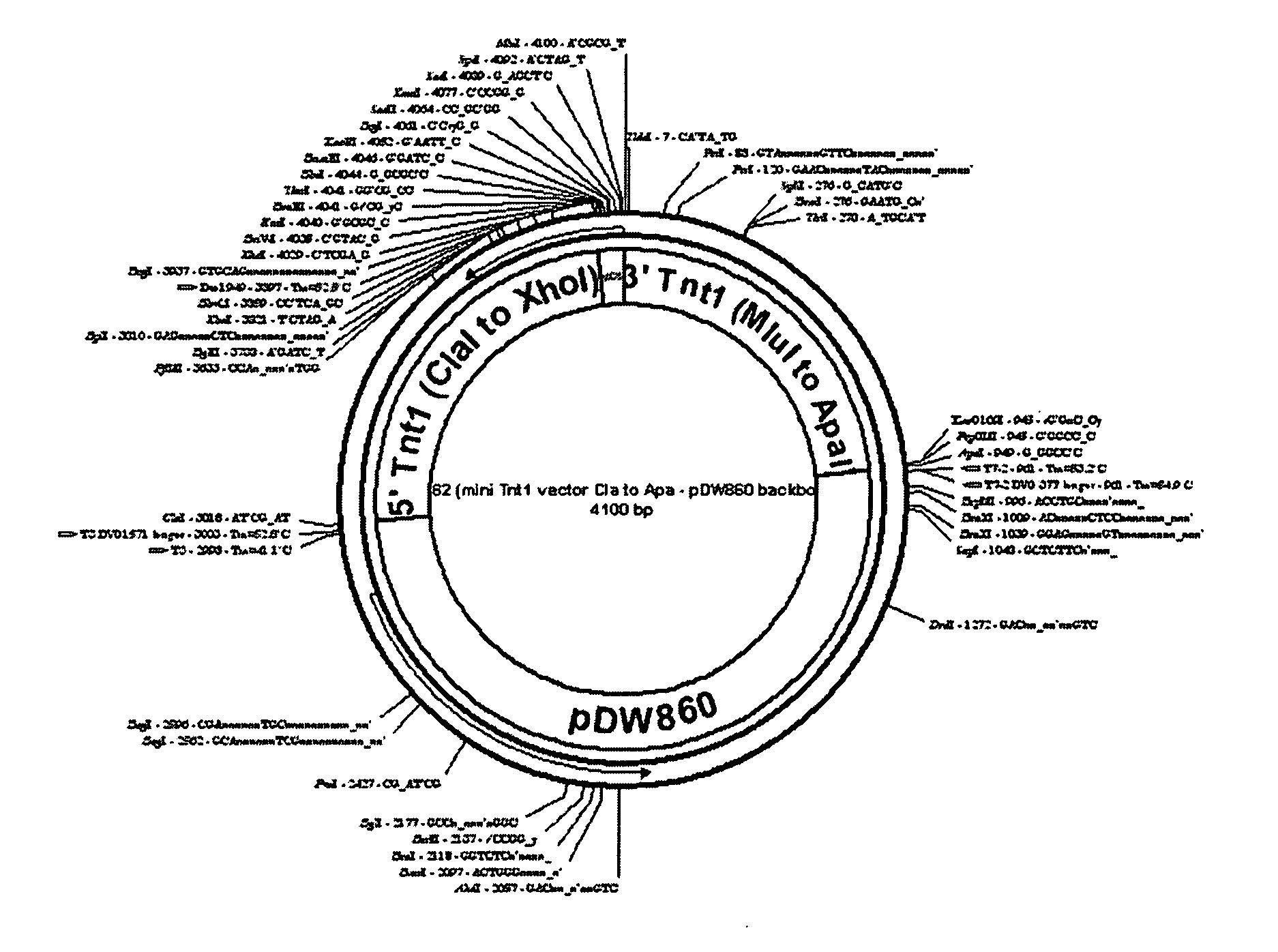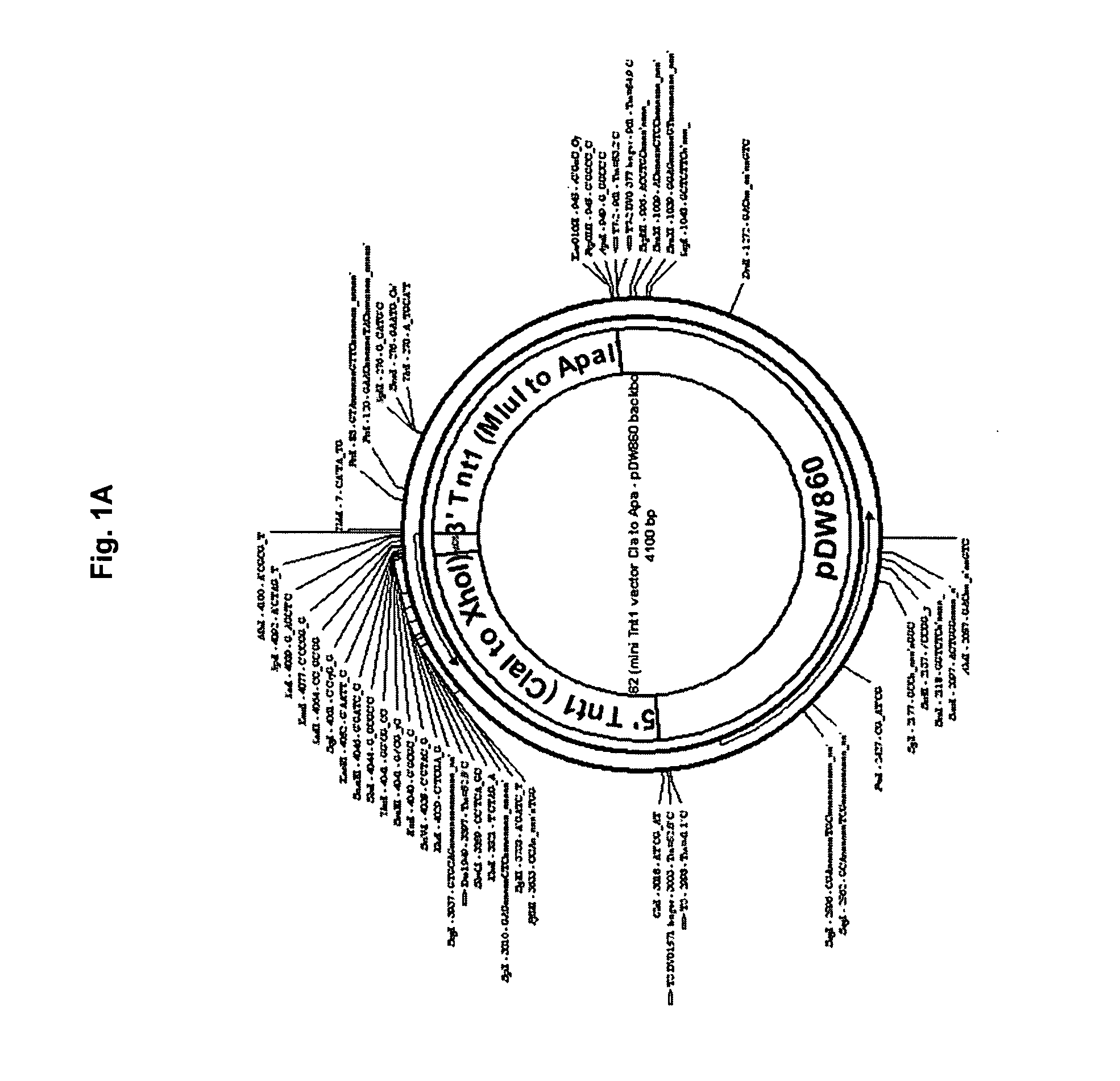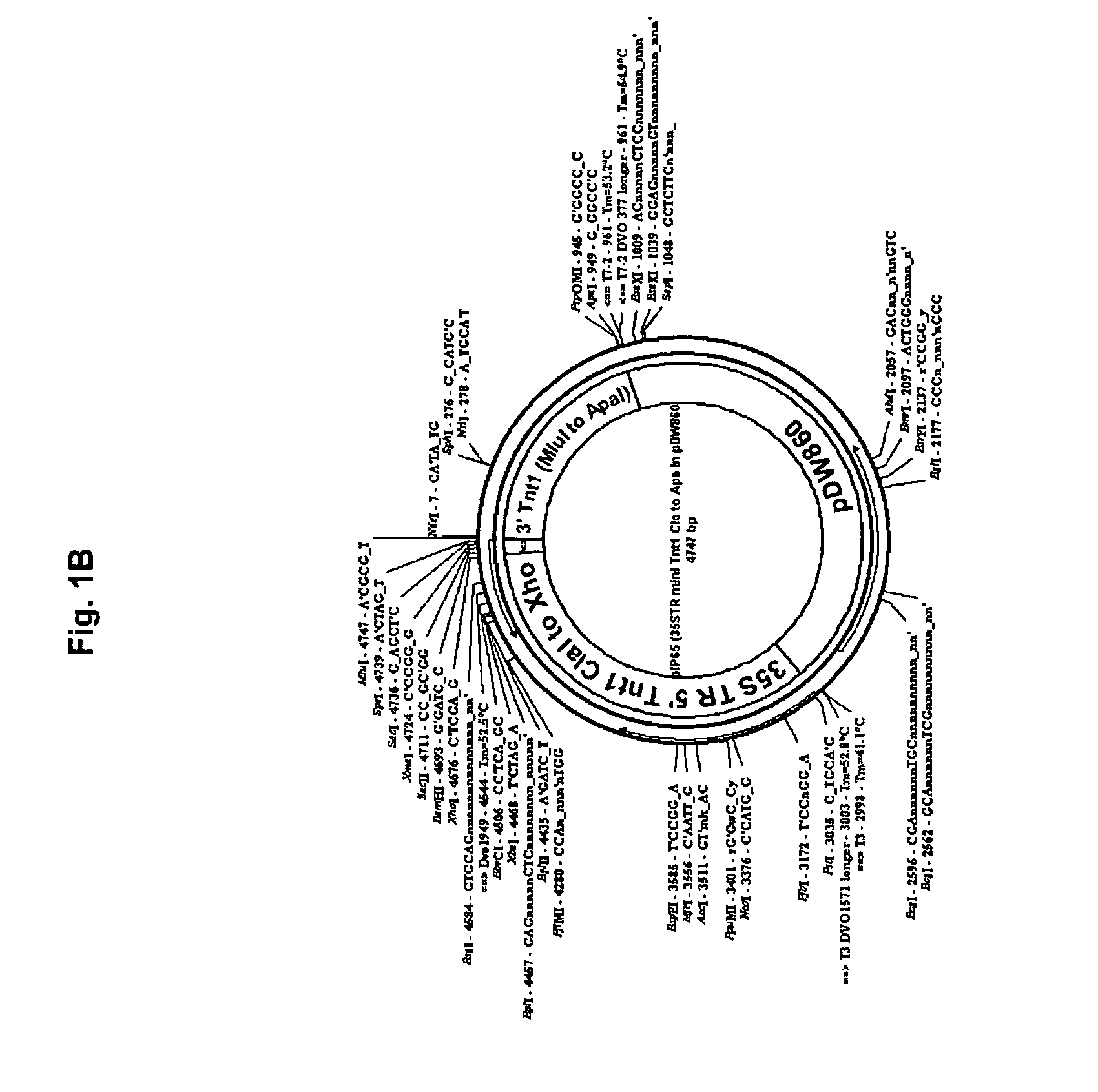Retroelement vector system for amplification and delivery of nucleotide sequences in plants
a nucleotide sequence and vector system technology, applied in plant cells, microorganism testing/measurement, biochemistry apparatus and processes, etc., can solve the problems of system limitation to lower eukaryotes, and achieve the effect of improving the reaction to stress and altering the fatty acid
- Summary
- Abstract
- Description
- Claims
- Application Information
AI Technical Summary
Benefits of technology
Problems solved by technology
Method used
Image
Examples
examples
[0106] Generating the Tnt1 Element
[0107] The functional Tnt1 retrotransposon was constructed using a PCR based strategy. The entire element was assembled from four different parts that were PCR amplified from tobacco genomic DNA, cloned and sequenced. Due to degeneracy of the element in the genome, sequence mismatches at a frequency of 0.5% (in comparison to X13777) were observed. Nucleotide mismatches were repaired using overlapping primers and resulting clones were then used to assemble a full-length element that matched the published sequence. Transcription of the Tnt1 element in tobacco is induced by microbial elicitors, pathogens and abiotic stresses such as wounding and freezing (Mhiri et al., 1997; Melayah et al., 2001). Additionally, constitutive expression of Tnt1 in a heterologous host has been obtained by using the 35S CaMV promoter to drive transcription (Lucas et al., 1995; Hirochika et al., 1996). A second Tnt1 clone was created through a PCR based method using overla...
example 2
[0139] The following is annotated sequence information for the present invention:
[0140] Seq ID NO:1 pIP62 Wild type mini-Tnt1 2034 bp: 1-6: Unique ClaI cloning site for removal of the entire mini-Tnt1 cassette 7-616: Tnt1 5′ LTR 617-697: non-coding leader sequence 698-1012: Translation start and Tnt1 Gag coding sequence 1013-1095: Multiple cloning sites 1096-1372: C-terminus of Tnt1 Pol up to the stop codon 1373-1418: Tnt1 non-coding sequence between stop codon and 3′ LTR 1419-2028: Tnt1 3′ LTR 2029-2034: Unique ApaI Cloning site for removal of the entire mini-Tnt1 cassette
[0141] Seq ID NO:2 pIP65 35S mini-Tnt1 2681 bp: 1-56: Linker sequence with unique ClaI and BsiWI sites for removal of the entire mini-Tnt1 cassette 57-886: 35S promoter region 887-1263: Tnt1 5′ LTR 1264-1344: non coding leader sequence 1345-1659: Translation start and Tnt1 Gag coding sequence 1660-1742: Multiple cloning sites 1743-2019: C-terminus of Tnt1 Pol up to the stop codon 2020-2065: Tnt1 non-coding seque...
PUM
| Property | Measurement | Unit |
|---|---|---|
| temperature | aaaaa | aaaaa |
| temperature | aaaaa | aaaaa |
| pH | aaaaa | aaaaa |
Abstract
Description
Claims
Application Information
 Login to View More
Login to View More - R&D
- Intellectual Property
- Life Sciences
- Materials
- Tech Scout
- Unparalleled Data Quality
- Higher Quality Content
- 60% Fewer Hallucinations
Browse by: Latest US Patents, China's latest patents, Technical Efficacy Thesaurus, Application Domain, Technology Topic, Popular Technical Reports.
© 2025 PatSnap. All rights reserved.Legal|Privacy policy|Modern Slavery Act Transparency Statement|Sitemap|About US| Contact US: help@patsnap.com



